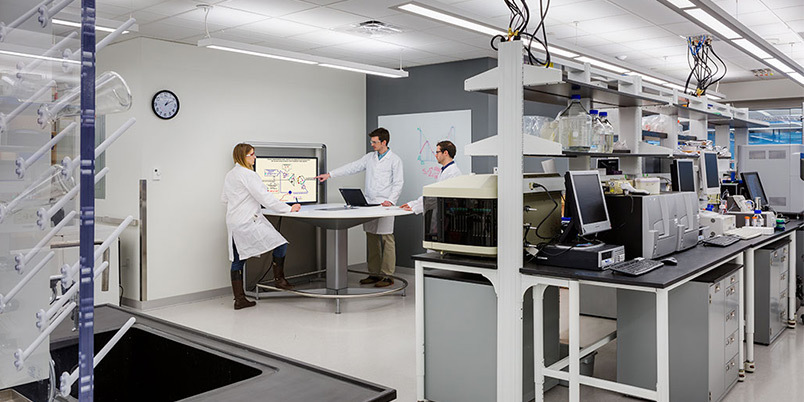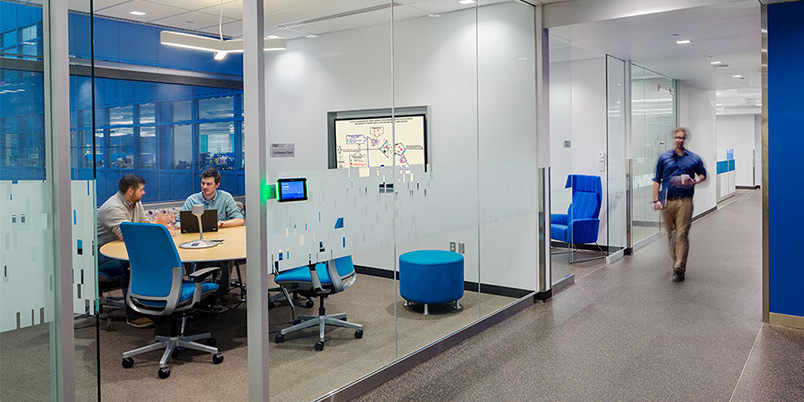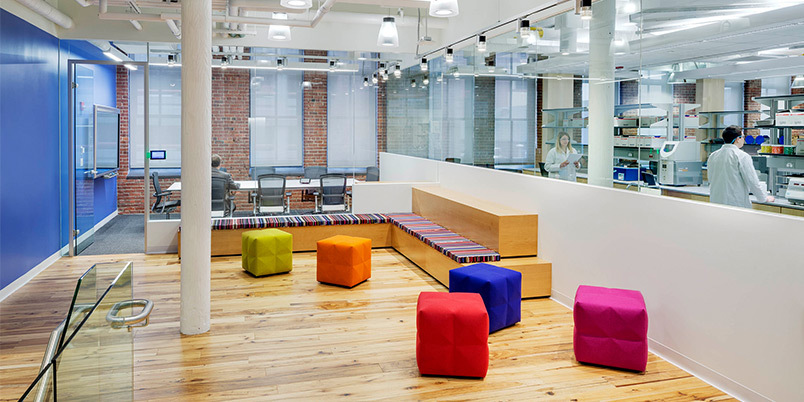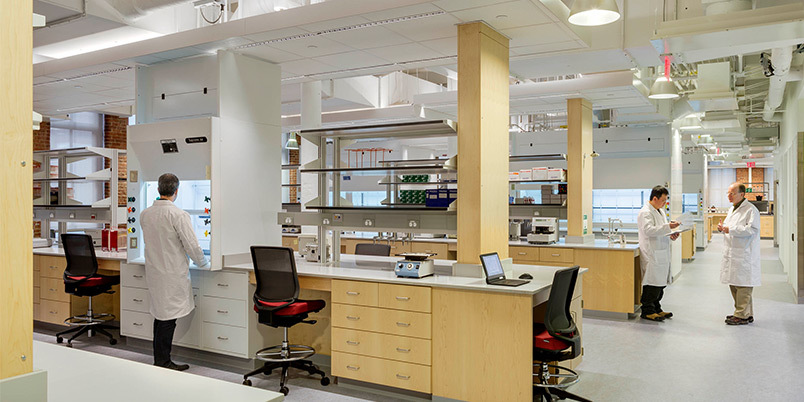Jim Levin

Name: Jim Levin
Job title and company: Senior lab planning strategist, Perkins+Will Boston
Degree(s): BS; MS; DVM (DACLAM)
Professional interests:
I’m really interested in complex laboratories that are designed as positive work environments and are flexible in their function. As a veterinarian and scientist, I’ve worked in many facilities that gave strong consideration to their function to protect people, animals, or products but were not positive work atmospheres. I think even the most complicated labs used for biosafety research or pharmaceutical production can be made flexible to meet ever-changing business models, sustainable to provide high value and positive returns on investment (ROIs), and gratifying to everyone who works inside. Positive workplaces make for better product solutions.
What are you working on now?
I’ve been helping on a number of lab projects that include research and development (R&D) spaces and pharmaceutical good manufacturing practice (GMP) spaces. Sometimes my role is to help the designers understand how research really happens inside of a lab and other times I’m more of a technical or regulatory expert, bringing together user requirements with safety or compliance regulations. An example of this is a government lab I’m helping to design that will make individualized medicines that will be given back to the patients who provided the source materials. The lab makes multiple products and every therapy has to be safe for the patients while also meeting US Food and Drug Administration (FDA) regulations. I really enjoy the complexity of the project and working with the client and our staff to come up with novel approaches that will pass FDA review.

Above: Image courtesy of Greg Premru.
How do (or how did) you explain to your mom what you do for a living?
I help design complex laboratories for disease research, vivarium, and pharmaceutical manufacturing facilities. Since I worked inside these types of high-risk labs until transitioning to senior lab planning strategist, my mom already understood what these labs were like. Taking my user experience and applying it to design was always a natural extension of my thinking.
What inspired you today?
I’m always inspired by nature. No matter how creative we might be, there always seems to be some shape or form in nature that’s amazing in its beauty and brilliance. My favorite times are moments in the woods or mountains or on the water when everything is still and all you can see, hear, and feel is the uniqueness of the surroundings.
What architectural buzzword would you kill?
Anything made up for pseudo intellectualism. Words need to communicate, not impress.
When you’re working, do you discuss or exchange ideas with your colleagues?
Yes, frequently. Since I’m not formally trained as an architect, I get to ask my colleagues many questions and share my perspective as a lab user. The best ideas usually get developed when everyone gets an honest chance to contribute to the dialogue.

Above: Image courtesy of Greg Premru.
What are you reading?
I just finished reading The Martian by Andy Weir and The Essential Smart Football by Chris B. Brown. The Martian appealed to the scientist in me that appreciated all of the problem solving it took to survive. The Essential Smart Football is a history of strategy and how one successful approach begets the next one. Learning from history is both inspirational and rewarding.
Do you sketch by hand or digitally?
I’m actually more of a cut-and-paste kind of person. I can’t draw very well and I’m just learning how to use Revit. I figured out how to communicate my ideas by taking drawings and turning them into jigsaw puzzles that I reassemble into new images. While it’s not always efficient, I find it to be very effective.
Has your career taken you anywhere you didn’t expect?
I never thought I would transition out of the field of science into architecture. I was a development scientist for 30 years and I never before imagined I would be able to take my knowledge of research and translate it into laboratories as workplaces. It’s kind of like having made candy for a long time and now getting to design the candy store itself.
Where is the field of architecture headed?
Net zero structures. I remember when the simplest calculator first hit the market and cost $10,000. Now they can cost 50 cents. If we push for net zero designs, the cost of these elements will fall and this will become routine.
Can design save the world?
Not by itself, but design can certainly make significant contributions to preserving our planet. Labs are no exception. If we don’t strive to design buildings that are sustainable and resilient, it won’t happen on its own.

Above: Image courtesy of Greg Premru.
What do you hope to contribute from your work?
Laboratories that inspire and make people excited about their work.
Who or what deserves credit for your success?
My graduate school biochemistry professor who inspired me to work hard and be bold. He was the first person to recognize my potential and then help me see what was possible.
Your least favorite college class?
Physics. It was a requirement for admission into veterinary school and it was the most painful time I spent during college.

Above: Image courtesy of Greg Premru.
If you could give the you-of-10-years-ago advice, what would it be?
The world is changing faster than you can conceive. Make it change for the better.
Your favorite Boston-area structure?
The Longfellow Bridge across the Charles River. As a child, I always loved driving up Storrow Drive and seeing how the bridge connected the Cambridge skyline to Boston. One of my favorite views of the city is looking at the bridge from Cambridge with Beacon Hill as the backdrop.
If you were on a late-night TV show, what would your 30-second plug be?
If we don’t save the earth, who will?
If you could sum up your outlook on life in a bumper sticker, what would it say?
Stay in the moment!

